
Since the Middle Ages, humans have had a close relationship with honeybees as we’ve captured and reared them for their valuable and delicious honey. Over time, however, captive honeybees started to outcompete wild honeybees, which were also losing habitat as their native forests were cut down. Then in the late 1940s, beekeepers in Africa started to see outbreaks of a virulent parasite – the Varroa mite – which quickly spread to hives in Europe and the Americas.
Now virtually every commercial colony in the world is infected with the Varroa mite, requiring treatment to prevent complete colony collapse. Because of the widespread distribution of the Varroa mite, people assumed that wild honeybee colonies must have also come under attack and been wiped out from their forest habitat in Europe.
So when Benjamin Rutschmann and Patrick Kohl – both PhD researchers at the University of Würzburg, Germany – headed out into the forest in search of wild honeybees, they didn’t know if they would actually find anything. They set up artificial feeders to attract honeybees in Hainich forest, northwest Germany, and then tracked the foraging bees back to their nest. Against all expectations, they found some wild colonies were still present in this ancient beech forest. Suddenly, a fun weekend project between friends turned into a concerted scientific effort to map and monitor the bees that so many people thought had long since vanished.
This story is from the Volume 13 - Issue 6 edition of BBC Earth.
Start your 7-day Magzter GOLD free trial to access thousands of curated premium stories, and 9,000+ magazines and newspapers.
Already a subscriber ? Sign In
This story is from the Volume 13 - Issue 6 edition of BBC Earth.
Start your 7-day Magzter GOLD free trial to access thousands of curated premium stories, and 9,000+ magazines and newspapers.
Already a subscriber? Sign In
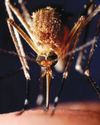
World's First Malaria Vaccine
The World Health Organization’s director-general hails ‘historic moment’ as mass immunisation of African children begins
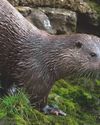
Is River Pollution Putting The Species In Jeopardy Again?
Ten years ago, it was jubilantly announced that o ers had returned to every county in England. But is river pollution putting the species in jeopardy again?

The Big Burnout
Long hours, low pay and a lack of appreciation — among other things — can make for a stressful workplace and lead to burnout. It’s something we should all be concerned about, because over half of the workforce reports feeling it

Putting Nature To Rights
More countries are enshrining the right to a clean environment into law. So if a company or government is impinging upon that right, you could take them to court
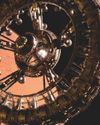
Mega Spaceship: Is It Possible For China To Build A Kilometre-Long Spacecraft?
Buoyed on by its successful Moon missions, China has launched a five-year study to investigate the possibility of building the biggest-ever spacecraft

Are We Getting Happier?
Enjoying more good days than bad? Feel like that bounce in your step’s getting bigger? HELEN RUSSELL looks into whether we’re all feeling more cheery…

“Unless the Japanese got the US off their backs in the Pacific, they believed they would face complete destruction”
Eighty years ago Japan’s surprise raid on Pearl Harbor forced the US offthe fence and into the Second World War. Ellie Cawthorne is making a new HistoryExtra podcast series about the attack, and she spoke to Christopher Harding about the long roots of Japan’s disastrous decision
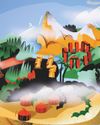
Your Mysterious Brain
Science has mapped the surface of Mars and translated the code for life. By comparison, we know next to nothing about what’s between our ears. Over the next few pages, we ask leading scientists to answer some of the most important questions about our brains…

Why Do We Fall In Love?
Is it companionship, procreation or something more? DR ANNA MACHIN reveals what makes us so willing to become targets for Cupid’s arrow
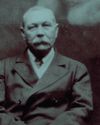
Detecting the dead
Following personal tragedy, the creator of that most rational of literary figures, Sherlock Holmes, developed an obsession with spiritualism. Fiona Snailham and Anna Maria Barry explore the supernatural interests of Sir Arthur Conan Doyle